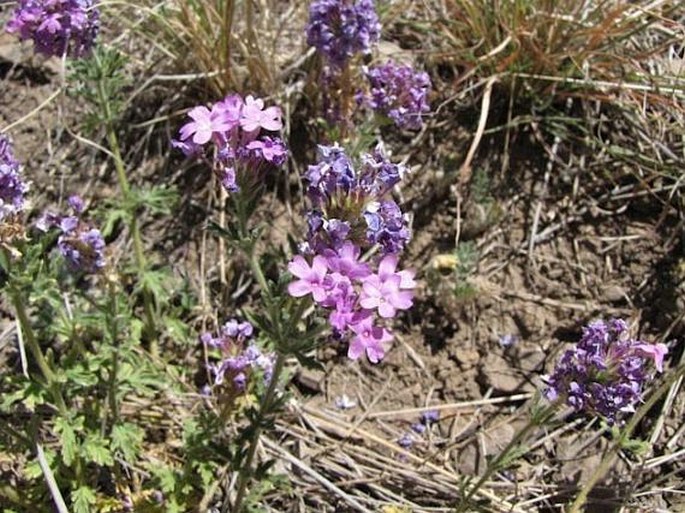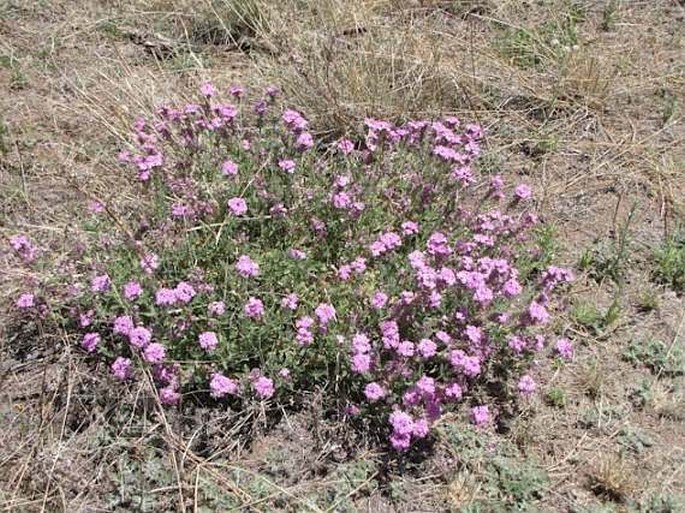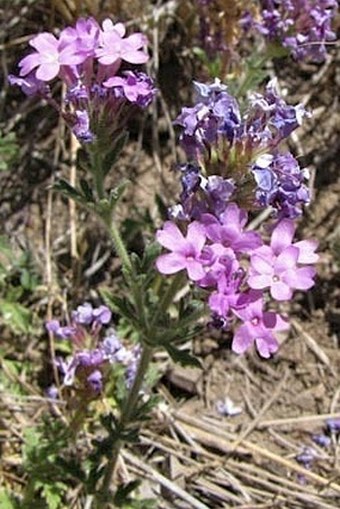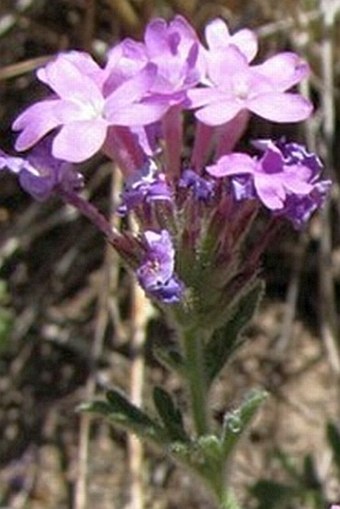Syn.: Verbena ambrosiifolia Rydb. ex Small., Verbena bipinnatifida Schauer, Verbena bipinnatifida Nutt.
Family: Verbenaceae Jaume St-Hil.

Distribution: From South Dakota through midwestern states in US, all southern states from east coast through Texas, New Mexico, Arizona and California to Mexico and Guatemala (perhaps as far south as Nicaragua).
Ecology: Desert, grassy areas, foothill canyons and washes, up to elevation of 1400 m. Blooms in spring and summer.

Description: Annual or perennial herb, stems up to 50 cm tall, hairy, branching from base, from fibrous roots. Leaves are opposite, although variable in shape, they are usually bipinnately dissected (bipinnatifid), 1–3.5 × 1–3 cm, have rolled margins, dark green, deeply veined, stiffly haired. Flowers are radiating in clusters at the stem tips. They are tubular, 5 sepals 6–8 mm long, 5 petals 9–12 mm long, pinkish purple to pale violet, pink or white.
Notes: This plant is suitable to be grown in the gardens and therefore it is widely distributed, even as seeds. It is frequently grown as medicinal plant.



These images were taken in USA, Arizona, Buenos Aires Wildlife Sanctuary (May 2009).


